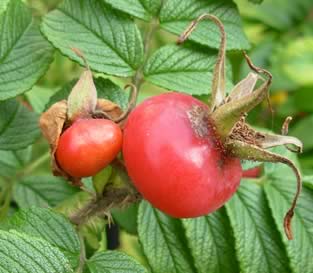
“Excuse me,” I stopped a man who was passing by. “Are you familiar at all with plants?”
“No, I know absolutely nothing about them”, he tells me.
Being as he was a native to the area, and I’m but an American plopped into this foreign land, I press on. “Please sir, can you just tell me. Do you know if this plant is related at all to blueberries?”
 “No,” he laughs, “that’s not blueberries! Those are myrtle berries. Anyone knows that.”
“No,” he laughs, “that’s not blueberries! Those are myrtle berries. Anyone knows that.”
Anyone but myself, that is. Oh well. One of the downfalls of being a foreigner. Even the nature ignoramuses often know more about the local flora and fauna than I do.
But I have a tool at my disposal. The great and powerful internet, and the knowledge that much of the plant life we see and take for granted is really edible.
Enter wise old google, and I learned that these myrtle berries are, in fact, edible. They tasted kinda funny though, so I picked some and tried to see how they’d taste boiled into a sugar syrup. I tried that, and it was yummy, but they had a slight chalkiness to them in addition to the earthy woody sweet flavor. Paired with something acidic, all the chalkiness went away.
 When my fave blogger, Butter Powered Bike, decided to make a Wild Things Roundup about rosehips, I wondered if I’d be able to participate. Rosehips are the edible fruit that are left on rose bushes after the flowers wither off and drop, and grow around the world, but nearly all the rose bushes in my area are suspect, as they’re grown on public property and managed by gardeners, and have been sprayed with some chemicals that are most likely non edible….
When my fave blogger, Butter Powered Bike, decided to make a Wild Things Roundup about rosehips, I wondered if I’d be able to participate. Rosehips are the edible fruit that are left on rose bushes after the flowers wither off and drop, and grow around the world, but nearly all the rose bushes in my area are suspect, as they’re grown on public property and managed by gardeners, and have been sprayed with some chemicals that are most likely non edible….
I thought I wouldn’t be able to participate in the roundup, but then my sister invited me to her home for my birthday, and I discovered in her yard a big old rose bush filled with tons and tons of large orange rosehips.
“Sister dearest,” I asked her, “Are your rosehips organic, or do you spray your bushes with fertilizer?”

I did a little happy dance. I’d be able to participate in the roundup. I’d be able to test out cooking with rose hips. I’d be able to share two new foods with you readers.
I decided to make rosehip and myrtle berry candies! I know, I know, not ultra healthy. They’re filled with sugar. But hey, there’s no corn syrup in these, no food coloring, no artificial flavorings, and no chemicals whatsoever. So, I won’t feel bad about sharing this recipe.
Myrtle Berry and Rosehip Candies
Rosehips and myrtle are a terrific combination. Rosehips have an acidity to them that makes the chalkiness of the myrtle berries disappear. Myrtles, on the other hand, have a rich and earthy flavor which compliment the tart flavor of rosehips beautifully.
Just a note- this recipe can easily be transformed into a syrup instead of a candy, and this syrup tastes terrific on meat or pancakes or anything else.
Just for your viewing pleasure, here’s a picture of a myrtle berry cut in half. Not quite like a blue berry.
Once you finish with that, wash off all your rose hips.
Put the myrtle berries and rosehips in a pot and add some water and sugar. To get my candies, I added 1 cup of water and one and a half cups of sugar; a greater water to sugar ratio will result in a more syrupy end product.
Boil the whole thing for at least half an hour, until the liquid is a dark purple. Halfway in the middle of cooking, you might want to mash the lot with a potato masher to break up the berries a little more.
Once cooked, strain the lot through a mesh strainer. If you want a syrup use as is; if you want candy, return to the pot until it starts bubbling up like this picture below.










yes we have sine myrtle trees, I use the berrys in smoothies, it's great that they come in the winter when other berries are not in season. This morning my smoothie will also have rose hips, thanks for the tip!